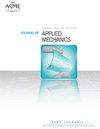仿生材料力学背景下的材料信息学工具
IF 2.8
4区 工程技术
Q2 MECHANICS
引用次数: 3
摘要
材料的分析和设计通常是一个缓慢的过程,可能需要数周、数月或数年的时间。而且,目前许多材料平台依赖昂贵的原材料来源,无法实现可持续发展目标。与此同时,受生物启发的材料信息学——由多尺度建模、机器学习和自主实验等新兴技术推动——正在改变理解、发现、开发和选择材料的方式。这些工具的影响尤其值得注意,因为它们可以用于开发资源较少、社会影响较大的材料。一个将从材料信息学工具的使用中受益匪浅的领域是结构生物材料,其中机械性能对物种生存的生物和工程性能至关重要,例如抵抗捕食者的断裂装甲、重复载荷的弹性恢复或机械驱动能力。一代又一代的研究人员研究了生物材料迷人的结构-性质关系,这些关系构成了它们令人印象深刻的特性,包括机械弹性。尽管积累了科学知识,但相对而言,很少有人将其转化为工程生物材料。为了解决这一差距,新兴的材料信息学工具现在可以用来利用遗留数据、新收集的经验观察和预测模型,在该领域取得重大进展。本文章由计算机程序翻译,如有差异,请以英文原文为准。
Materials Informatics tools in the context of bio-inspired material mechanics
The analysis and design of materials is often a slow process that may take weeks, months, or years. And, many current material platforms rely on expensive raw material sources and fail to achieve sustainability goals. Meanwhile, bio-inspired Materials Informatics – fueled by emerging techniques such as multiscale modeling, machine learning and autonomous experimentation – is transforming the way materials are understood, discovered, developed, and selected. The impact of these tools is particularly noteworthy since they can be used to develop materials with fewer resources and with greater societal impact. A field that would strongly benefit from the use of Materials Informatics tools is that of structural biological materials, where mechanical properties are crucial for biological and engineering properties for species survival such as fracture resistant armor against predators, elastic recovery for repeated loadings, or mechanical actuation capacity. Generations of researchers have studied biological materials for their fascinating structure-property relationships that make up their impressive properties, including mechanical resilience. Despite the accumulation of scientific knowledge, relatively little has been translated to generating engineered bio-inspired materials. Addressing this gap, emerging Materials Informatics tools can now be used to make use of legacy data, newly collected empirical observations, and predictive models to make significant advances in this field.
求助全文
通过发布文献求助,成功后即可免费获取论文全文。
去求助
来源期刊
CiteScore
4.80
自引率
3.80%
发文量
95
审稿时长
5.8 months
期刊介绍:
All areas of theoretical and applied mechanics including, but not limited to: Aerodynamics; Aeroelasticity; Biomechanics; Boundary layers; Composite materials; Computational mechanics; Constitutive modeling of materials; Dynamics; Elasticity; Experimental mechanics; Flow and fracture; Heat transport in fluid flows; Hydraulics; Impact; Internal flow; Mechanical properties of materials; Mechanics of shocks; Micromechanics; Nanomechanics; Plasticity; Stress analysis; Structures; Thermodynamics of materials and in flowing fluids; Thermo-mechanics; Turbulence; Vibration; Wave propagation

 求助内容:
求助内容: 应助结果提醒方式:
应助结果提醒方式:


